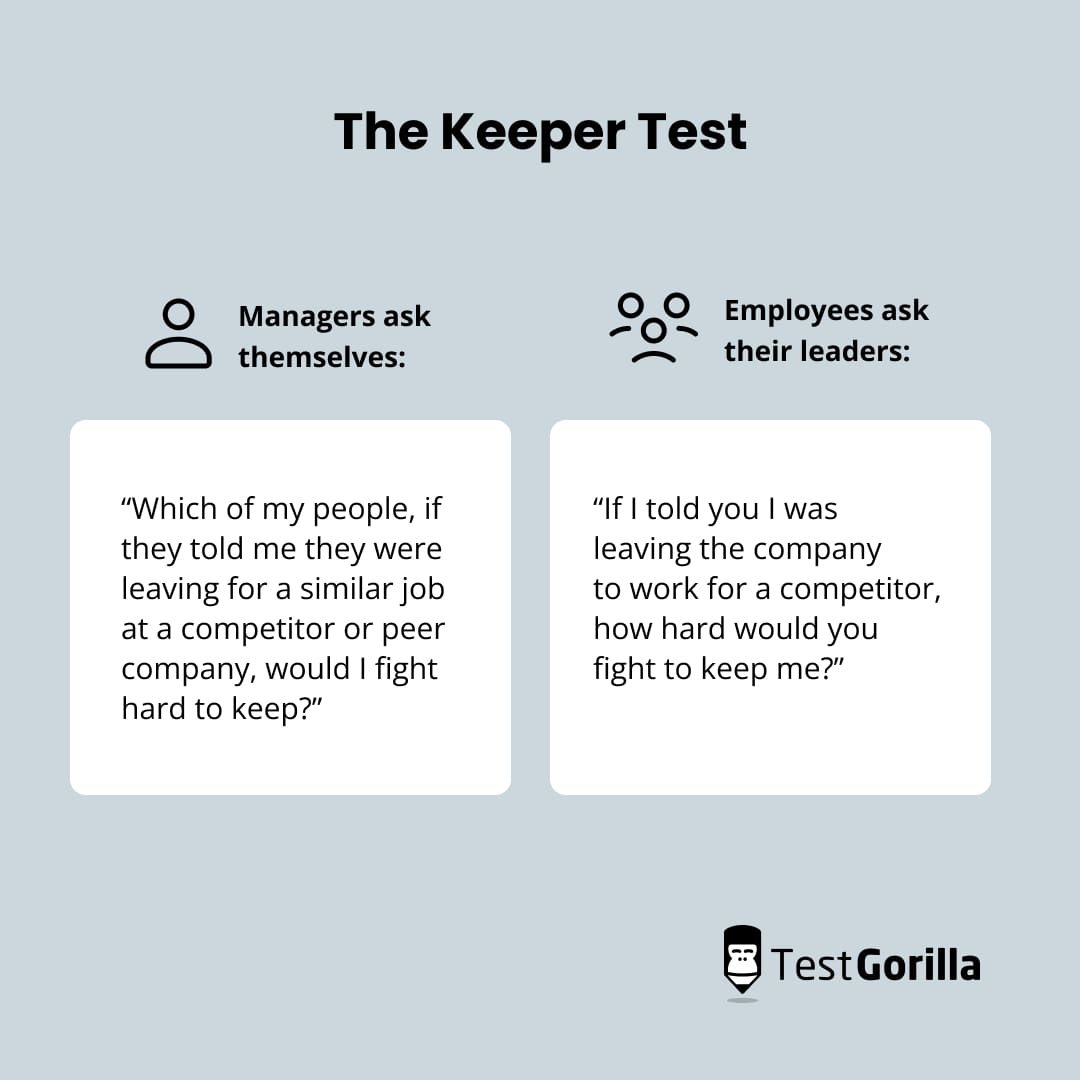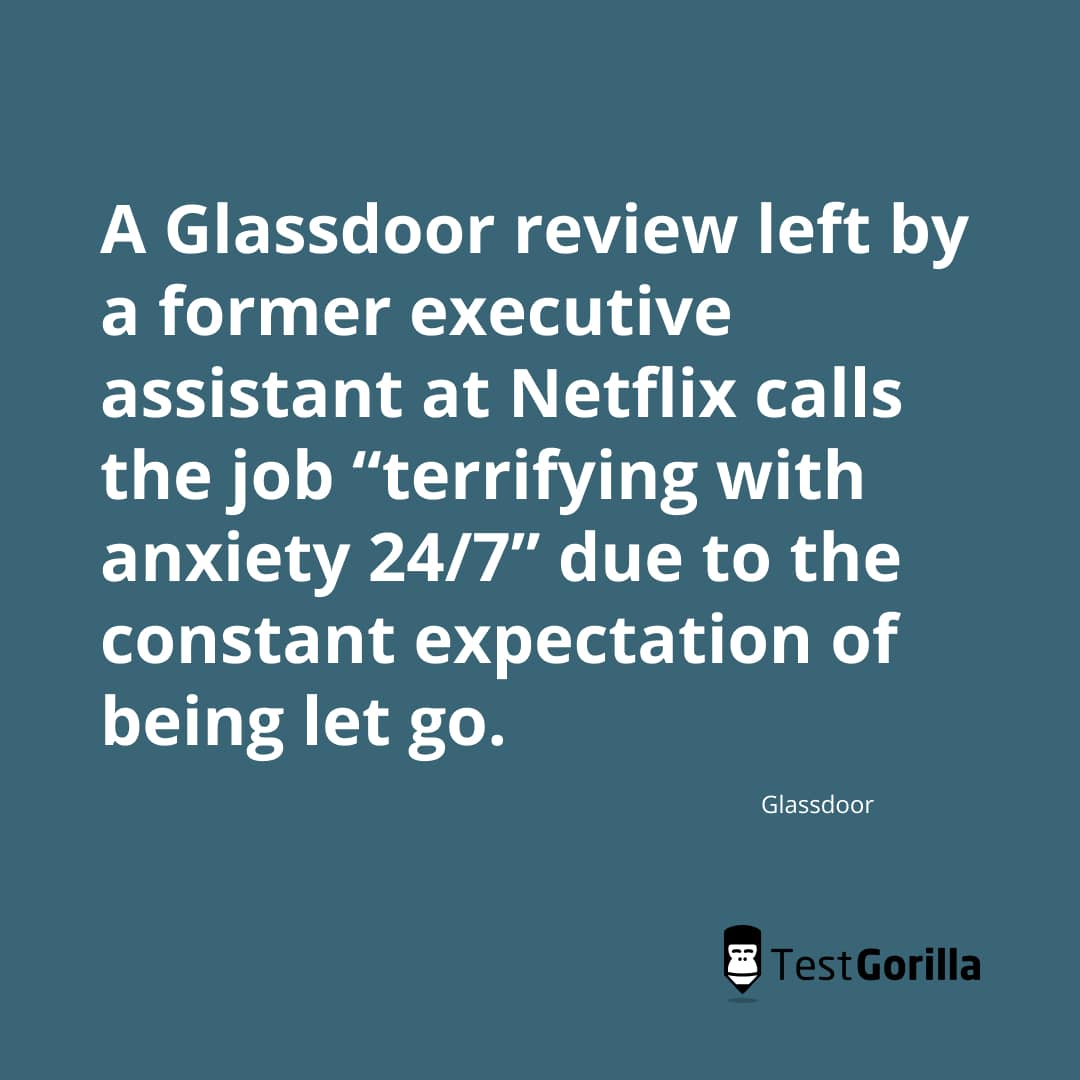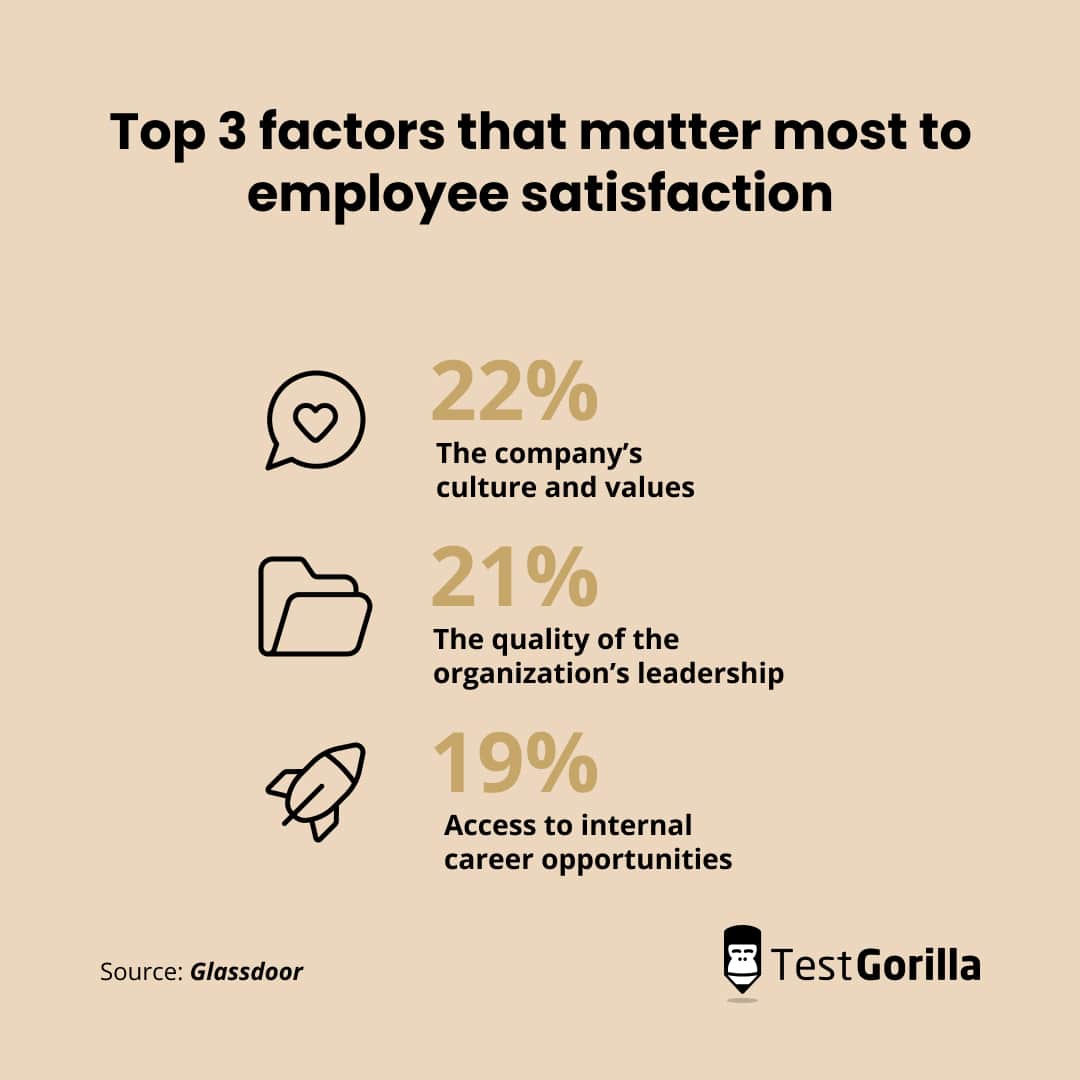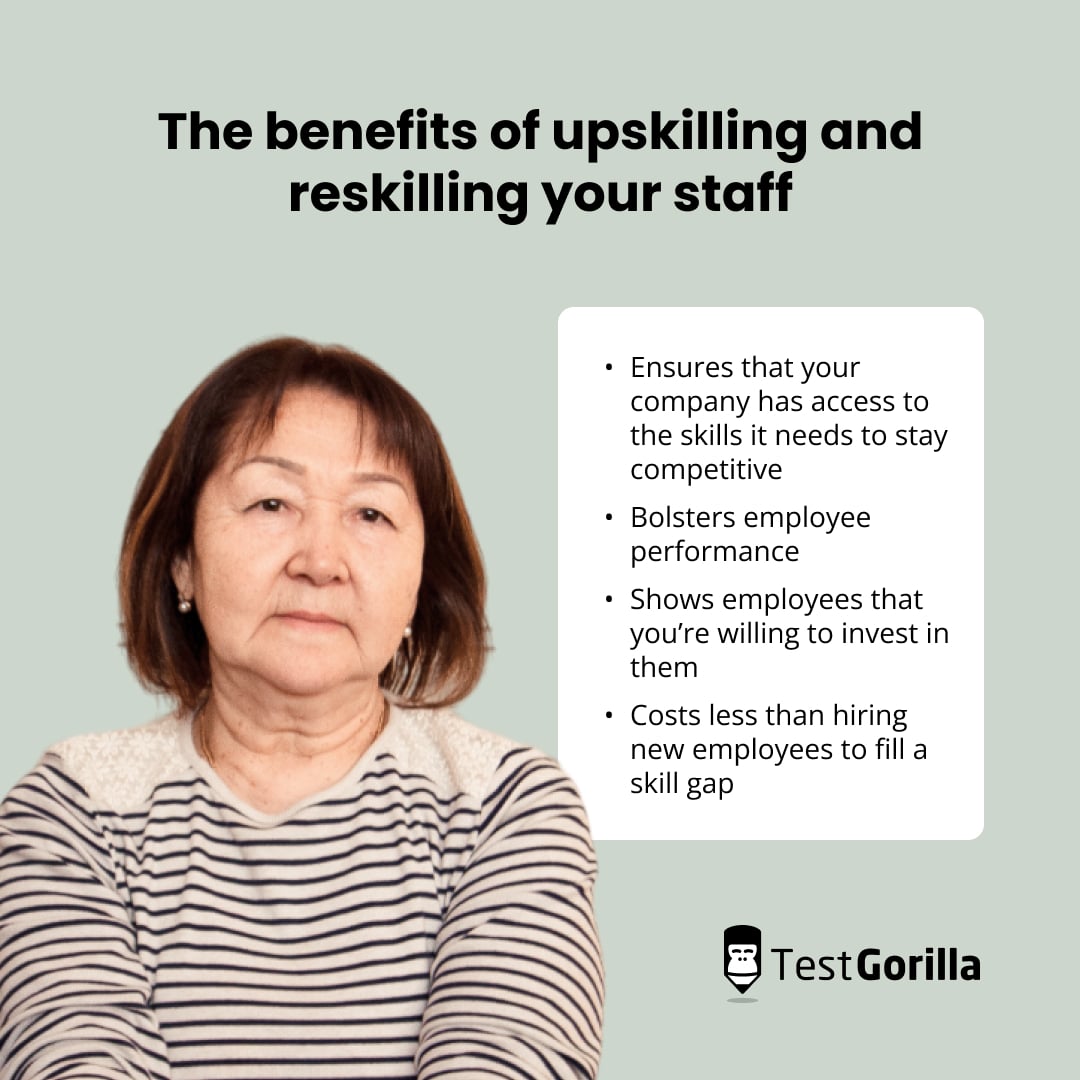Most of your employees have been with your company for years. They’re highly skilled, and team cohesion is as strong as ever.
But unfortunate circumstances are forcing you to let someone go.
In line with company policy, you apply the Keeper Test. You look at your employees and ask yourself: “Which of these people would I fight to keep?”
By the end of the day, you end up with your longest-serving employee clearing their desk. The rest of your staff are hurt and anxious about their jobs. They think their former colleague could have turned their performance around, given a chance – but now they’ll never know. Their loyalty and tenure couldn’t protect them.
Although it sounds impossibly harsh, the Keeper Test is a real talent management technique used in major companies. And while it’s been hailed as a bold way to improve team performance, it can do serious damage to company culture.
Luckily, it’s not the only way to effectively influence performance. Read on to learn how you can use upskilling, cultural change, and skills-based hiring techniques to develop a more compassionate approach to managing talent.
What is the Keeper Test?
The Keeper Test is an ongoing method of talent assessment that enables a company to prioritize its highest performers. It was pioneered by Netflix, the streaming service and producer of series such as Stranger Things and House of Cards, and popularized by a set of slides that went viral in 2012.
The Keeper Test requires managers to ask themselves, “Which of my people, if they told me they were leaving for a similar job at a competitor or peer company, would I fight hard to keep?”
But it isn’t just for management. Employees are also encouraged to ask their leaders and managers, “If I told you I was leaving the company to work for a competitor, how hard would you fight to keep me?”
It’s designed to encourage reciprocal feedback between employees and management.
The idea is that Netflix employees feel empowered to ask about their position at work, and management feels empowered to make tough decisions that help the whole team perform better.
Who invented the Keeper Test?
The documentation for Netflix culture, including the Keeper Test, was developed by its co-founder Reed Hastings and former chief talent officer Patty McCord.
The test reflects Netflix’s company policy and values that have been outlined in Hastings’s and co-author Erin Meyer’s book, No Rules Rules – in particular, the cultural belief that Netflix should function like a professional sports team, not a family.
In a family, members expect unconditional love. But a sports team aims for high performance and is only as good as its individual players. Every player, regardless of how senior they are, is expected to give their best every day or risk being cut.
On a team, players understand that they may be benched if their performance lapses. And as managers of a team, leaders know they need to make hard choices about which player suits which role best. No good coach would hold onto a lacking team member for sentimental reasons.
The Keeper Test challenges managers to choose the best players for their team, disregarding any factor other than performance to maintain high talent density. Of course, different managers may have different ideas about what makes an employee “the best.”
Read our complete article to learn more about how sports can help you access the best employees.
The best insights on HR and recruitment, delivered to your inbox.
Biweekly updates. No spam. Unsubscribe any time.
The advantages of the Netflix Keeper Test
Though Netflix’s Keeper Test may seem brutal, it does have some advantages that perpetuate its usage.
Here are the biggest reasons why leaders still choose to use it, both at Netflix and beyond.
Retains top performers
The Keeper Test forces managers to focus their attention on their top performers, encouraging those good employees to stay with the company. It ensures that the strongest members of the team are prioritized.
Firing underperformers also frees up managers to seek out more top talent for their teams, always raising the performance floor. At least in principle, the Keeper Test empowers leaders to build a business in which everyone is an MVP.
Improves employee performance
If an employee’s job security hinges on top performance, of course, they will work harder and do their best at work.
Netflix’s company policy notes that long-term high performers are given leeway when they slip up. Employees are assessed on their whole record, not their most recent mistake. The test encourages consistently high performance, not erratic peaks and valleys.
Lower performers are also given plenty of opportunities to ask for feedback and identify ways to improve. The Keeper Test is premised on managers being forthright with their staff so that underperformers aren’t caught off guard by an unexpected firing.
Benefits the bottom line
Implementing the Keeper Test saves the money you would otherwise need to pay an underperforming employee.
Netflix has eliminated control processes like the performance improvement plan (PIP). Because employees already receive regular feedback from managers, they don’t need the warning of a PIP to step up when told they’re underperforming.
The money saved on PIPs gives Netflix the funds to offer generous severance packages to underperformers and avoid wasting money on employees who aren’t as efficient or effective as they should be.
Helps decision-making in crises
Last year, after experiencing rapid growth during the worst of the pandemic, Netflix had to make significant layoffs. While it’s never easy to decide where to make cuts to a business, the Keeper Test offers a simple, seemingly objective metric for evaluating which employees are worth keeping.
When cutting back a company to navigate a lean period, it makes sense to focus on keeping high performers. At least in theory, this approach enables companies to stay efficient in spite of lower staff numbers.
The disadvantages of the Netflix Keeper Test
The advantages above are real, and depending on your business’s circumstances, they may be relevant to your needs.
But ultimately, the Keeper Test comes with many more cons than pros.
Here are the most major downsides to the Keeper Test, along with their consequences for your company.
Keeper Test disadvantages at a glance
Disadvantage | Why it’s a problem |
Creates a culture of fear | Fosters negative health and performance impacts for employees |
Undermines the psychological safety of employees | Affect a company’s overall efficiency by creating paranoid workers |
Diminishes job satisfaction | Negatively impacts employee job performance |
Treats employees as disposable | Hurts a business’s reputation and ability to secure top talent |
Leads to a “revolving door” hiring and firing approach | Damages a company’s long-term knowledge base |
Subject to unconscious bias | Undermines an organization’s range of perspectives and scope for innovation |
Harms an organization’s diversity and inclusivity | Creates an environment that discriminates against many marginalized groups |
Ignores wider organizational issues | Allows systemic problems with wide-ranging performance impacts to persist |
Creates a culture of fear
Nobody does their best work when they’re afraid. A culture of fear is a work environment in which employees are motivated by fear, not incentivized by good and empathetic management.
Employees who are constantly afraid for their jobs are likely to experience consequences on their health and performance, including:
Absenteeism
Low morale
Reduced productivity
Performance anxiety
Stress and hypertension
A fear-based ranking system also damages the ability of employees to collaborate. In a Darwinian environment, staff are more likely to focus on undermining others to get ahead than on working together to deliver the best results. This ultimately damages the overall results of the company as a whole.
Undermines the psychological safety of employees
Needless to say, working in a culture of fear stifles employees’ psychological safety.
In a psychologically safe workplace, employees should feel free to share ideas, raise concerns, or admit mistakes without worrying about negative consequences. This kind of work environment encourages openness, collaboration, and innovation.
But it’s impossible to feel safe at work when your job is constantly under threat. A Glassdoor review left by a former executive assistant at Netflix calls the job “terrifying with anxiety 24/7” due to the constant expectation of being let go.
Employees can’t thrive in this kind of environment, and no company can yield the best results when its staff are struggling to get through every day.
Diminishes job satisfaction
Employees who are satisfied with their jobs are generally higher performers. In Glassdoor’s 2019 employee satisfaction survey, U.S. workers identified the following factors as most relevant to their job satisfaction:[1]
The company’s culture and values (22%)
The quality of the organization’s leadership (21%)
Access to internal career opportunities (19%)
Given that work culture is a primary factor driving job satisfaction, it’s safe to say that a culture of anxiety and fear around job security has strong negative impacts on employee happiness at work.
Employees working in a culture fostered by the Keeper Test are likely to suffer from diminished performance – which would realize their fears by placing their jobs in jeopardy.
Treats employees as disposable
When you’re focused on the bottom line, it can be easy to forget that your employees aren’t just numbers. They’re human beings, and they deserve to be treated that way regardless of their performance at work. Disregarding that fact is unethical and cruel.
The brutality of the Keeper Test shows your employees – even the top performers – that you view them as disposable. That has serious consequences for employee morale because it grants them little relief in their day-to-day lives.
The Keeper Test can also hurt your company’s reputation. Fired employees might talk about their experience, which can spread to potential new hires. This can damage your ability to hire the best performers in the future, undermining the whole point of the test.
Leads to a “revolving door” hiring and firing approach
The Keeper Test is an ongoing process, which means that employees constantly need to work to keep their jobs – and hiring managers are always replacing low performers with new talent.
This approach isn’t financially sound. Replacing an employee can cost a lot more than you may think when you take hiring, onboarding, and training costs into account.
It can also damage your company’s institutional memory. By letting go of longer-term staff who aren’t performing as well as others, you risk losing valuable insights accrued over time. This can make your business less efficient.
Subject to unconscious bias
The Keeper Test relies on managers to decide who their top performers are. But if that manager hasn’t reckoned with their unconscious bias, their choices may be less reliable than you hope.
For example, a male manager might be inclined to treat his female employees more critically when their performances lapse. But when their male colleagues slip up, he may be more forgiving.
With the Keeper Test in play, that could lead to female employees getting fired when they don’t necessarily deserve to be. In addition to gender, the same logic could apply to any other kind of bias the manager might hold, such as in regard to ethnicity, sexual orientation, disability, or neurodiversity.
If a manager applies the Keeper Test with unconscious bias in play:
Their team becomes less diverse, with fewer perspectives to encourage innovation
Their team’s performance may not improve because they may have mistakenly fired somehow who wasn’t the true “worst performer”
Employees from marginalized groups become more fearful for their own jobs
Your company’s employer branding suffers from this perceived lack of diversity
These impacts are wide-ranging and may affect your ability to hire and retain top talent in the future.
Harms an organization’s diversity and inclusivity
Netflix claims that it tries to hire the type of person who is motivated, rather than frightened, by the need to repeatedly stake a claim to their job. But anyone who lives with neurodiversity or mental illness is unlikely to meet that profile.
The Keeper Test is incompatible with diversity and inclusivity. Especially for neurodiverse individuals, it’s frightening and alienating to know that your job security hinges on your ability to cope with uncertainty and the pressure to perform at all times.
With the right support, neurodivergent employees are more than equipped to deliver amazing performance at work. But the Keeper Test is terribly suited to that task.
You can support your neurodiverse employees far better by communicating with them clearly about any performance issues and providing them with the support they need to thrive at work.
Ignores wider organizational issues
The biggest problem with the Keeper Test is that it focuses on individual worker performance without considering that there could be problems with the organization as a whole.
In pinning the blame for low performance on individual workers, the Keeper Test fails to take into account issues like:
Workplace cultural issues
Bullying behavior from managers
Inadequate staff training
Poor team cohesion
Sub-par compensation for workers
Recruitment policy failures
All of these organizational problems have direct impacts on employee performance. If your company works to fix these problems instead of dwelling on individual work, you may see low performers start to improve.
The alternative: 5 best practices for building a healthy talent management approach
A healthy talent management approach should recognize that organizational policy affects individual performance. By taking a system-focused approach to talent management, rather than an individual-focused one, you can help all your staff to reach their potential.
These five best practices aim to guide your company in supporting its employees. Follow each step to build a talent management strategy founded on trust, growth, and employee dignity.
Healthy talent management at a glance
What to do | Why it helps |
Prioritize upskilling and reskilling | Ensures existing workers have the skill sets they need to thrive |
Foster an inclusive culture | Encourages innovation, creativity, and diversity of thought |
Use other means to talk about performance | Gives managers and employees the tools they need to deliver the best results |
Lay off employees with dignity and respect | Maintains your company’s organizational health and limits damage to morale |
Improve your hiring techniques | Limits the need for performance improvement measures or firings |
1. Prioritize upskilling and reskilling
HR expert LynnAnn Brewer cites the provision of ongoing learning and growth opportunities as a factor that makes an organization irresistible. Employees want the chance to learn and develop their skills on the job.
And it’s hard to deny the benefits of becoming a skills-first organization. Providing opportunities for staff to upskill and reskill:
Ensures that your company has access to the skills it needs to stay competitive
Bolsters employee performance
Shows employees that you’re willing to invest in them
Costs less than hiring new employees to fill a skill gap
Making upskilling and reskilling an institutional priority eliminates the need for the Keeper Test. Instead of asking which team members you would fight to keep, ask yourself whether an employee needs more support to meet the needs of their role.
Then, find an appropriate way to help them improve their skills so they can thrive at work.
This approach takes the pressure off employees, too. In a skills-first company that values training and growth, they can ask for feedback from managers with confidence that the company has both the resources and the willingness to help them improve.
2. Foster an inclusive culture
As we’ve explained, a culture of fear is isolating, stressful, and unsupportive. It isn’t an environment in which most employees can deliver their best work. That’s especially true for neurodiverse employees, who really struggle in a state of constant anxiety.
But a supportive, inclusive culture is another matter. Inclusiveness isn’t just about hiring diverse employees. It’s about making sure they feel supported, welcomed, and valued for their unique perspectives.
Workplaces prepared to build a culture like this are rewarded with happier employees who are committed to sticking with the company that appreciates them. They also empower employees from a range of backgrounds to share their unique perspectives and ideas, driving innovation within the company.
An inclusive culture isn’t just good for employee wellbeing – it’s profitable, too. Companies with highly inclusive cultures tend to generate more cash flow per employee than their less inclusive counterparts.
Employees who feel included are usually more invested in their work. They deliver better results, which means more profit for your organization.
3. Use other means to talk about performance
The Keeper Test is an all-or-nothing approach to employee performance. If they don’t perform to expectations, they can expect to lose their job. It doesn’t account for the support that employees may need to improve before being told to leave.
One aspect of the Keeper Test is almost always true: It’s vital for managers and employees to be able to talk openly about performance.
Having regular 1:1 meetings between employees and managers keeps the lines of communication open. It gives managers frequent opportunities to raise concerns with their staff, and it gives staff room to ask managers for feedback or support.
Crucially, though, you need to follow through on those conversations. Employees should have access to a roadmap to improve their performance with clear steps and benchmarks for understanding what is expected of them.
Over time, you can track each of your employees’ progress toward those benchmarks with regular skills testing. It’s an evidence-based approach to performance management that reduces the risk of unconscious bias.
Ideally, this approach to performance management should be proactive – it should aim to address potential performance issues before they escalate. With continuous feedback and an ongoing process of collaborative goal-setting, it’s easy to stay on top of employee performance.
4. Lay off employees with dignity and respect
No company is immune to the possibility of layoffs, especially in the current financial climate. As we’ve already discussed, the Keeper Test can be helpful when it comes to making tough decisions in a crisis.
But it can also be a cruel way to make a call that can upend an employee’s entire life. It treats employees as disposable and risks leaving bad blood between your organization and the employees you fire.
Remember, those employees don’t just disappear when they’re fired. They can spread insider knowledge of your firing approach to their friends and peers. This could end up causing reputational damage that harms your ability to recruit the best candidates later.
Instead of the Keeper Test, consider using skills testing to map your workforce. Once you have a clear picture of your organization’s skill gaps, you can make informed decisions about where to upskill, where to reskill, and where to make cuts.
You should also take the following steps to communicate with your employees about layoffs to mitigate damage to staff morale:
Communicate with all staff, not just those in danger of layoffs
Inform employees about the factors informing your decisions
Provide a timeline for decision-making
Notify all teams of your decisions at the same time
Make employees aware of wellbeing and assistance programs at work
And, of course, offer laid-off employees what you can. Outplacement services and severance packages are perks that show all your staff – fired or not – that you see them as human beings.
5. Improve your hiring techniques
Turnover is expensive, stressful, and a drain on morale. Fortunately, in most cases, it’s manageable. And one of the best ways to manage it is to hire more smartly.
Think about it: If you hire the right people in the first place, you won’t have to fire them and replace them later. It makes sense to go the extra mile to get hiring right.
There are two main factors to consider when looking for the perfect candidate: their skills and their offerings to your workplace culture.
Skills-based hiring is proving a reliable way to find and retain the very best employees. In our State of Skills-Based Hiring report, we found that 82% of employers who use skills-based hiring are satisfied with their hires – compared to only 67% of those who don't use it.
And hiring for culture add – the likelihood that your new hires reflect your company’s values in everything they do – is a simple way to improve your workplace’s culture. It also means your employees are more likely to be compatible with your company in the long term.
Unlike the Keeper Test, the tests used to implement both of these approaches are not directly influenced by a manager’s unconscious bias. It’s a much more reliable way to identify and retain the people who fit best with your workplace.
Develop an evidence-based approach to talent management
The Keeper Test can have some short-term benefits. However, when you consider the consequences for company productivity and employee wellbeing, it’s hard to justify taking it seriously as a talent management technique.
Approach talent management compassionately by understanding the systemic issues that keep employees from doing their best.
By building an inclusive culture, offering employees scope to learn and grow, communicating clearly, and respecting the dignity of your workers, you can retain and develop the talent you have.
Learn more about the benefits of upskilling your workforce as well as the key differences between upskilling and reskilling.
Sign up for your free plan which gives you full access to 10 free tests in the test library, (including all personality tests), and start hiring for a better workplace culture today,
Source
Stansell, Amanda. (July 11, 2019). “Which Workplace Factors Drive Employee Satisfaction Around the World?”. Glassdoor. Retrieved April 11, 2023. https://www.glassdoor.com/research/employee-satisfaction-drivers
You've scrolled this far
Why not try TestGorilla for free, and see what happens when you put skills first.






















